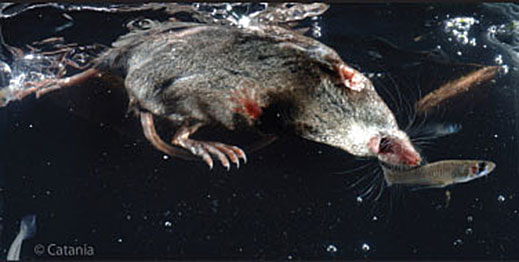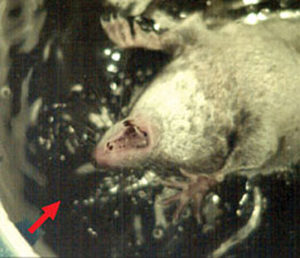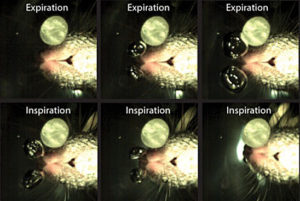|
|
Water shrews are remarkable predators. Weighing only about 12 grams, they are the smallest mammalian divers and eat almost any prey they can overpower. They depend on their whiskers to detect the shapes and movements of aquatic prey. As is the case for star-nosed moles, they also sniff while underwater to collect odorants. Shrew neocortex contains only a few sensory areas. Some of their anatomical specialization and behaviors are described below. |
| Stiff hairs on their hindlimbs and forelimbs provide added surface area for paddling and sharp claws help them cling to slippery surfaces. |  |
|
|
When foraging underwater shrews attack sudden water movements caused by escaping prey. The frame to the left shows a shrew attacking a jet of water simulating an escaping fish. (Movie) |
| In addition to detecting water movements, shrews also use their whiskers to detect the shapes and textures of immobile prey. The image to the right shows a shrew attacking a fake rubber fish under infrared lighting (Movie). | 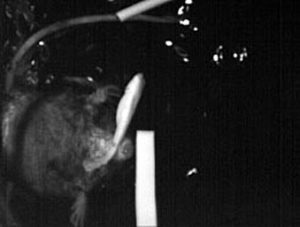 |
|
|
As is the case for star-nosed moles, water shrews can sniff while submerged. The images to the left show this behavior as the shrew exhales and then re-inhales air bubbles that contact the object being explored (Movie). |
| Water shrews can attack with incredible speed. The images above show a shrew attacking a pulse of water with a 20 ms reaction time. In only 50 ms (1/20th of a second) the shrew has bitten at the water movement (far right). |
| The shrew’s neocortex contains two large somatosensory areas and smaller visual and auditory areas. This relatively simple configuration of adjacent sensory maps may allow high-speed processing and fast reactions. | 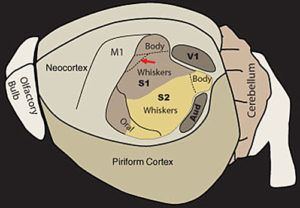 |

